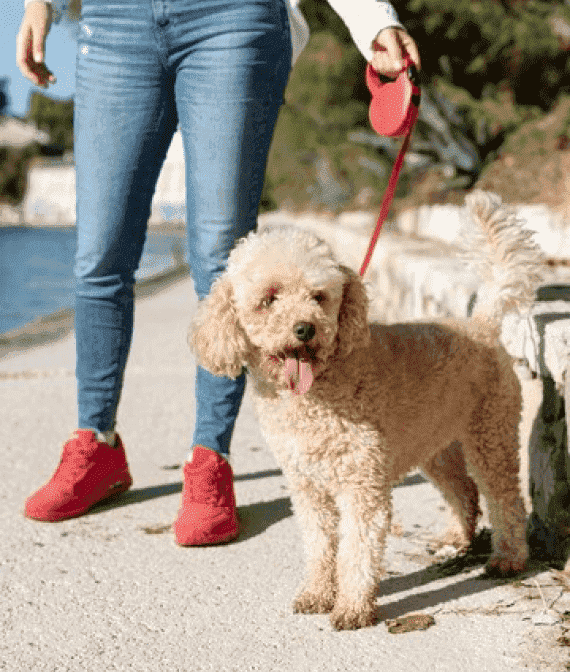

- Phone
- Email puppypetite@aol.com
-
Address
8002 17th Ave, Brooklyn NY 11214
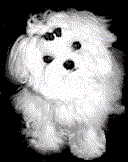
How To Leash Train A Puppy
Welcoming a new puppy into your home is an exhilarating experience filled with cuddles, playtime, and, well, the occasional chewed-up shoe. But beyond the joy and mischief lies an essential step of pet ownership that ensures the safety and well-being of your furry friend: leash training.
Mastering the art of leash training can seem daunting, especially to a first-time pet owner. It involves more than just strapping a lead onto your dog's collar and heading out the door. In fact, it's about establishing a positive association with the leash, teaching your pup not to pull, and ensuring they understand the basic commands and structure that come with it.
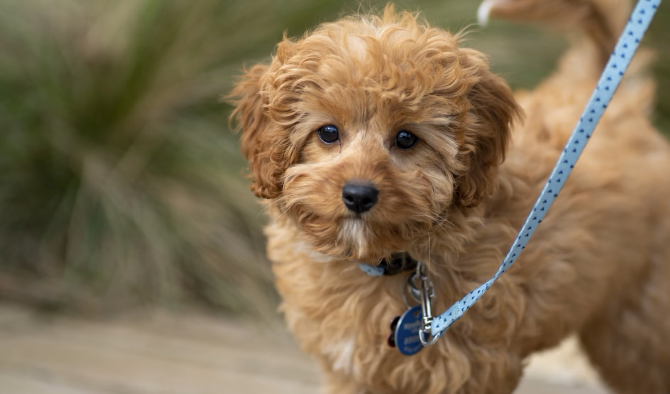

Why Leash Training is Crucial for Pups and People Alike
Before we get into the 'how,' it's crucial to understand the 'why' behind leash training. For starters, the dog training world and leash training your puppies is not a mere convenience; it's about instilling obedience, which lays a strong foundation for all training that follows. Proper leash manners lead to a more enjoyable puppy walking experience, where you and your pet can enjoy quality time together without the stresses of pulling and yanking.
More importantly, a dog that is not leash trained can pose significant safety risks, not only to themselves but to others. Make sure that you start training as soon as possible especially when you are raising a young dog. The ability to call your dog back to you and keep them under control at all times is a fundamental aspect of pet care. Furthermore, leash training promotes regular exercise, which is vital for your pup's physical and mental health.
Remember, dogs are social animals that enjoy the freedom of the outdoors. Leash training teaches them that outside time is a shared, structured experience, not a free-for-all activity. This approach nurtures a more balanced and enjoyable life for both pet and owner.
Getting Started - The Leash, The Collar, and Understanding Equipment
The right tools can make a world of difference in leash training. Opt for a lightweight, comfortable leash of about four to six feet for puppies. Collar options range from flat collars to harnesses and training collars, and each has its benefits. Flat collars are standard and useful for all purposes, while harnesses can provide more control, especially with strong or excitable pups. Just ensure they fit properly to avoid any discomfort for your pet.
It's also important to introduce your puppy to their leash and collar at a young age. Start indoors, where they are comfortable, and allow them to get used to wearing the equipment without immediately heading outside. Use treats and praise to create a positive association with the training process.
Remember, the leash is not just a piece of rope; it's a communication tool that allows you to link up with your dog in a way that can reinforce good behavior and correct unwanted actions.
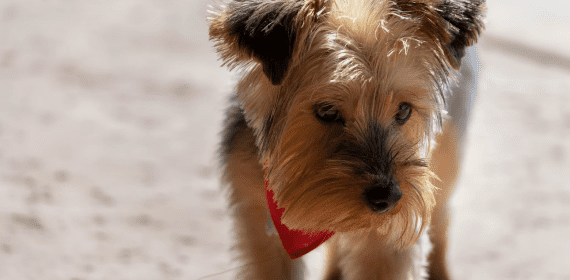
The Fundamentals - Patience, Praise, and Persistence
Leash training begins with walking, not pulling. Ideally, when starting puppy training, dog owners should start in a quiet, familiar environment with minimal distractions. Begin by letting your puppy drag the leash around under your watch, letting them walk calmly. This helps them get used to the sensation without feeling confined or restricted. Gradually, you should pick up the end of the leash and follow your pup around, letting them set the pace and explore within reason.
Keep puppy training session short and sweet-puppies have short attention spans, and you don't want to overwhelm them. But be persistent and consistent; daily practice is key to progress. Every walk is an opportunity to reinforce good walking habits. Use treats to reward walking calmly by your side and verbal praise to show your approval.
Step By Step Guide to Leash Training Your New Puppy
Introducing the Equipment
The correct equipment is the foundation of leash training. Before you begin, it's essential to have the right gear.
- Choosing the Right Collar or Harness - For many, the traditional collar with a leash is the first image that comes to mind. A flat chain or leather collar is a simple and effective choice for most breeds. However, certain dogs, particularly those with short muzzles or neck issues, may benefit from a harness. A harness can distribute pulling force across the chest and back, rather than the delicate neck area. Your pup's comfort and safety should be top priorities.
- Collar/Harness Fit - It's crucial to ensure that the collar or your puppy's harness fits correctly. You should be able to fit two fingers between the dog's neck and the collar, giving enough slack to be comfortable but not so loose that it can slip off. With a harness, it should be snug but not restrictive, and positioning and adjustments are paramount.
- Leash Length and Material - Leashes come in a variety of lengths and materials. A six-foot leather or nylon leash is an excellent all-around choice for most breeds. For more control or training purposes, a shorter leash can be advantageous. Material-wise, leather is durable and has a classic look, while nylon is easy to clean and can be more lightweight, which might favor more for smaller breeds.
Familiarization with Collar/Harness
Before you even attach a leash to the collar or harness, allow your puppy to get comfortable with the equipment.
- Positive Association - Every time you put the collar or harness on, offer a treat or engage in a play session. The goal here is to create a strong positive association with the equipment.
- Gradual Process - You should never rush the process. Start by introducing the collar or harness without pressure. Allow brief moments of wear, gradually increasing the duration. Always supervise your pup during this time to ensure they don't get it caught on anything.
- Indoor Practice - Leash training should begin indoors, a familiar and safe environment for your puppy. It's the ideal space to first associate the leash with calm and positive behavior.
- Leash Dragging - At first, allow the puppy to wear the leash inside with no tension. They will likely try to pull it off at first, so distract them with toys or treats to create a positive experience. A common approach is to have the leash on during meal times or play sessions when they're most content.
- Teaching 'Come' with the Leash - Hold the leash and walk a few steps away, then call your puppy with a cheerful, "come!" When they do, reward them. This teaches them to associate following the leash with good things.
Positive Reinforcement
One of the most effective tools in training any dog, and particularly a puppy, is positive reinforcement.
- Treats - Use high-value treats that your puppy loves to reward them for desired behaviors. Always offer treats immediately after the good behavior to reinforce the connection.
- Praise - Dogs crave your approval, so verbal praise and affection should accompany treats. Patience and consistent praise will encourage your puppy to repeat good leash-walking behaviors.
Gradual Exposure to Outdoor Environment
Once your puppy is comfortable with equipment and walking on a loose leash indoors, it's time to move the practice outside.
- Backyard or Patio - Start in a familiar and low-distraction area, such as your backyard or a quiet patio. Reinforce the indoor lessons, using treats to encourage positive behavior as you walk together.
- Short Trips - Initially, keep outdoor walks very short and peaceful, focusing more on exposure and calming association than distance or commands. It's your puppy's first venture into the wider world and can be a bit overwhelming.
Practice Basic Commands
The basic commands of sit, stay, come, and heel are invaluable for leash training.
- Sit at Crosswalks - Teach your puppy to sit at crosswalks as a precursor to learning to heel. This is a critical safety measure and a way to consolidate training outside the home.
- Incorporate Commands into your dog walks - Throughout your walks, reinforce basic commands with associated treats. Be mindful not to overdo it; walks should still be enjoyable and somewhat exploratory for your puppy.
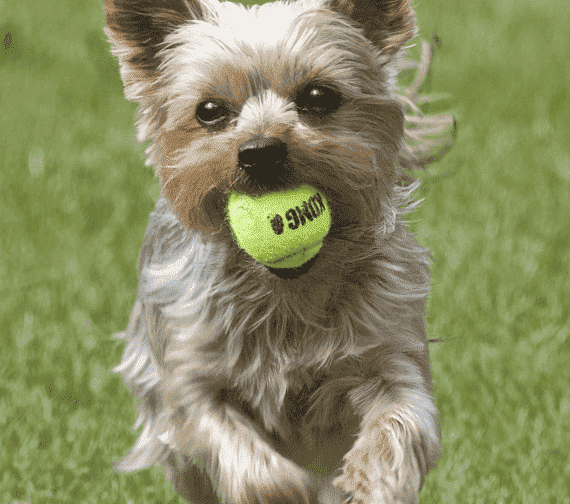
Handling Pulling and Distractions
All puppies will pull on the leash, often with great excitement, at some point. Managing this behavior is crucial for both your pup's comfort and your ability to enjoy walks together.
- The Stop Technique - If your dog pulls ahead, come to a complete stop. Stand still and wait for the leash to slacken, then continue walking. This method teaches your puppy that pulling leads to stopping and reduces the behavior. With this technique, dogs learn to stop pulling.
- Distraction Training - Distractions, such as other dogs, people, or fascinating smells, are a huge part of your puppy's world. Use controlled training sessions to desensitize them to distractions while on the leash.
Consistency and Patience
Consistency in training methods among all family members and patience with your puppy's progress are key for successful leash training.
- Consistent Responses - For the stop technique and any other dog training methods, make sure everyone in your household responds the same way to pulling or other behaviors. Mixed signals can confuse your puppy.
- Understanding Developmental Stages - Puppies go through developmental stages that might affect their training. Be patient and adjust expectations as needed. Consistent training will yield results as your puppy grows and learns.
Gradual Exposure to Different Environments
Your puppy will need to feel comfortable and respond well on a leash in a variety of environments.
- New Terrains - Introduce your puppy to different terrains and settings - from quiet suburban streets to bustling city sidewalks. Each new environment requires a new adjustment period for your pup.
- Practice Makes Perfect - Practice in these areas regularly, using the same positive reinforcement and techniques. The more varied environments your puppy experiences success, the more adaptable they will become.
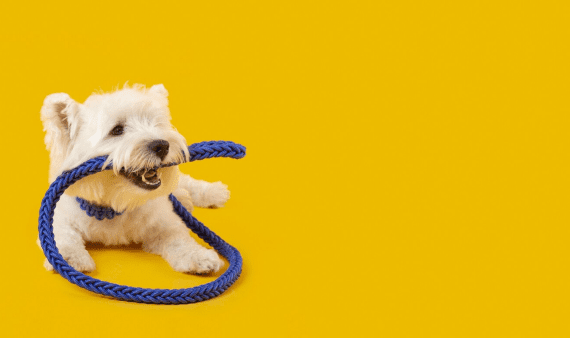
Safety First
Leash training should always prioritize safety, both for your puppy and for you.
- Traffic Awareness - Always keep a close eye out for traffic and teach your puppy from the first walk to be aware of their surroundings. Teach them to stay on one side of you on a loose leash during walks to ensure they're farthest from traffic.
- Identification - Accidents happen. Make sure your puppy has proper identification, either in the form of a microchip or a tag, in case they should get lost.
Leash training your puppy is an investment in a lifetime of enjoyable walks. It's a process that requires commitment, patience, and a lot of love. Remember, the aim is not to create a military-style march, but rather to teach your puppy the appropriate behavior for a leisurely, safe, and enjoyable stroll. Each step you take together is a new adventure, and with these tips, those steps will soon be their own reward.
Teaching Loose Leash Walking
Teaching your pup to walk without puppy pulling is the ultimate goal of leash training. To do this effectively, you must be consistent with your training and positive reinforcement. Here are the steps to achieve this:
Step One - Stand Still
Whenever your puppy pulls on the leash, stop walking. Stand still and wait for them to ease the tension. The moment they do, praise and reward them. This teaches your puppy that pulling gets them nowhere, but walking at your pace is rewarded. When they walk a few paces without pulling, make sure to pat them and reward them for being patient.
Step Two - Change Directions
If your pup continues to pull, change directions quickly and without warning. This breaks their focus and emphasizes that they need to pay attention to your movements. Be sure to praise and reward when they follow without pulling.
Step Three - Be Their Anchor
When your pup pulls, be like an anchor-stop dead in your tracks. There will be a moment when they look back at you to see why you've stopped. Use this moment to your advantage and reward them for their attention.
Step Four - Practice, Practice, Practice
Practice makes perfect. Consistency in your training methods will reinforce good walking behavior. Remember to be patient and calm. Your puppy is learning, and it's a process that takes time.
Using Command Words to Reinforce Leash Training
Training your pup with consistent commands can make all the difference. Utilize phrases like 'heel', 'easy', or 'leave it' to redirect their focus and encourage desired behavior. For example, 'heel' tells your dog to walk beside you without pulling. 'Easy' is a cue to slow down, and 'leave it' is to ignore a distraction.
These commands should be reinforced with treats and praise. Gradually, reduce the frequency of treats as your pup becomes more reliable with their obedience, but always keep verbal encouragement consistent.
What to Do When Training Isn't Going as Planned
Training a puppy is rarely smooth sailing, and hiccups are to be expected. Here are some common problems and solutions:
Pulling
If your pup is a natural tugger, practice in a familiar environment until they are much more comfortable with the process. Use high-value treats to keep their attention and be patient. Additionally, consider a front-clip harness for better control.
Barking or Lunging
These behaviors often stem from excitement or fear. Slow down and provide more distance from triggers, gradually decreasing that distance as your pup learns to remain calm. Use treats and calming techniques to redirect their attention.
Distractions
It's natural for puppies to be curious about their surroundings. When your pup is distracted, use command words and gentle pulls to bring their focus back to you. Over time, they'll learn to listen to your cues rather than following their impulses.
Crafting Safe and Enjoyable Walks for Your Puppy
Training Philosophy
When it comes to leashes, the common saying "you're only as strong as your weakest link" couldn't be truer. Likewise, your leash is only as effective as the training that comes with it. The underlying philosophy is simple but profound-positive reinforcement of desired behaviors. Your puppy should come to associate walking on a leash with good things, like tasty treats and your boundless affection. If you focus on what your dog should do instead of what they shouldn't do, training can be both effective and enjoyable.
Acclimatization to the Leash
Start with simple exposure to the leash in a positive environment. It might sound overly cautious, but even the sight of a leash can cause anxiety or fear in other dogs. Use the following tips to ensure a smooth transition:
1. Introduction at Home
Begin with short sessions where the leash is introduced as a toy, bringing excitement and interest.
2. Desensitization
Wearing the leash, even indoors, becomes normal. This step is crucial so that when it's finally used during a walk, it's not a source of stress.
Equipment and Fit
The success of your leash training is greatly influenced by the equipment you use and how it fits. The leash itself is important, but so is the collar or harness it's attached to.
1. Collar and Harness Types
Choose from a variety of collars and harnesses, but consider starting with a basic harness or a head halter (like a Halti or Gentle Leader) that gives you more control over your pup's movements.
2. Proper Fit
Whatever equipment you choose, it must be fitted correctly. A collar should be snug so that only two fingers can fit between the collar and the neck. A harness should not have any dangling straps that could get caught.
